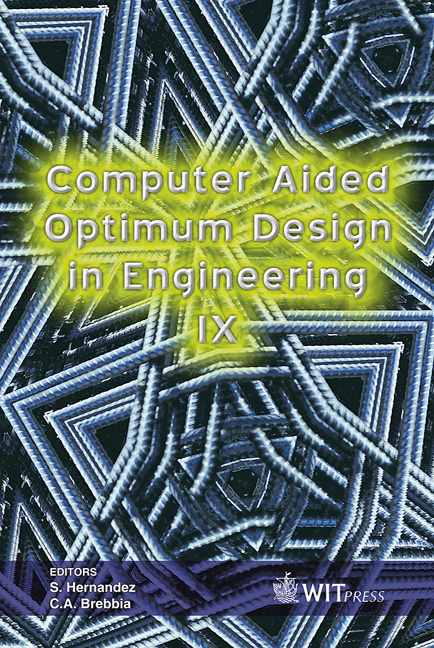A Nodal Based Evolutionary Structural Optimisation Algorithm
Price
Free (open access)
Transaction
Volume
80
Pages
10
Published
2005
Size
5,657 kb
Paper DOI
10.2495/OP050061
Copyright
WIT Press
Author(s)
Y.-M. Chen, A. J. Keane & C. Hsiao
Abstract
This paper proposes a simple and interesting algorithm dealing with structural shape, topology and thickness optimisation simultaneously. The proposed approach is based on an interesting idea of migrating boundary nodes in an iterative manner. An intuitive nodal-based evolutionary structural algorithm drives the optimisation process. Finite element analysis is required at each stage to reveal the relative stress distribution of the evolving structure, from which the lowly stressed edge nodes are identified as design variables and shift towards the higher stressed areas within the design domain during optimisation. Migrating the geometry boundary nodes directly changes the structural shape and thus perform shape optimisation. By introducing a fixed shape circular cavity into the evolving structure during optimisation initiates topology optimisation. Further shifting the cavity boundary nodes during optimisation gradually reveals the structural topology. In addition, nodal thickness is gradually decreased to enhance the reduction of structural weight. One feature of this nodal based approach is that by employing boundary nodal coordinates as design variables the interior finite element mesh becomes irrelevant to the shape definition of structures, thus unstructured mesh may be used. This enhances the compatibility on integrating the proposed algorithm with auto-meshing capability which is incorporated in most commercial finite element software today. A couple of benchmark problems, including the classical MBB beam, are used for illustration purposes. Keywords: nodal based approach, structural optimisation, evolutionary optimisation, finite element, topology optimisation.
Keywords
nodal based approach, structural optimisation, evolutionary optimisation, finite element, topology optimisation.





